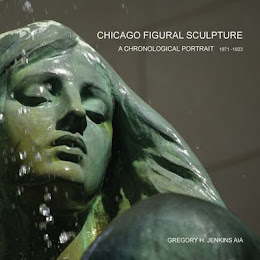Sculpture, in the late nineteenth and early twentieth century, was not simply ornament. It was not just "lobby" sculpture, or "plaza" sculpture. A sculpture's location, size, subject matter and purpose were integral to the building as a whole.
Charles Atwoods' Fine Arts Building at the Columbian Exposition would not be complete without Phillip Martiny's sculpture. Both are better for the other.
_________________________
FOR MORE CHICAGO SCULPTURE, ARCHITECTURE AND PHOTOGRAPHY
VISIT
























































